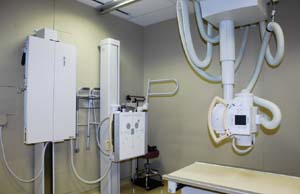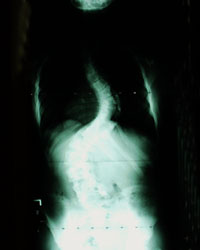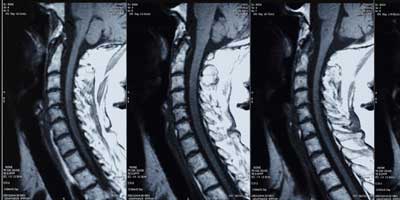Locations

Fax: (303) 762-9292

Understanding Medical Tests: X-rays (Radiographs)
X-rays, or radiographs, were discovered in 1895 and are the most common type of imaging study spine specialists rely on to confirm a diagnosis. Through the years, x-ray technology has significantly improved. For example, the amount of radiation needed to produce an x-ray is a mere fraction of what was needed in the past.
Hospitals, imaging and medical centers, and physician’s offices use x-ray to diagnose vertebral fractures, scoliosis, spondylosis, bone spurs (osteophytes), spondylolisthesis, and other spinal disorders.

What does an x-ray look like?
An x-ray is an image created in many contrasting shades of black, gray and white. Since bones and other calcified structures are denser than soft tissue and absorb more of the electromagnetic radiation, they may appear almost white. Muscle, fat and other soft tissues appear dark (black to gray tones).
 X-ray showing scoliosis (side-to-side abnormal spinal curvature)
X-ray showing scoliosis (side-to-side abnormal spinal curvature)
Procedure Preparation
An x-ray requires no special physical preparation. It is not necessary to restrict food or fluids prior to the test. If you are female of childbearing age, the technician may ask if you are pregnant. X-rays can be harmful to a fetus.
It is best to leave jewelry and other valuables at home. You will be asked to change into a medical gown.
Depending on the type of x-ray, you may be provided a lead apron to cover parts of your anatomy not being examined. This minimizes your exposure to radiation. For similar reasons, the technician operates the x-ray machine from behind a lead screen (or adjacent room).
After the Procedure
You will be asked to wait until the x-ray department checks the films. If the films are not of good quality, it may be necessary to repeat one or more images.
Conclusion
Our practice uses x-rays regularly to help diagnose spinal disorders. Our expert medical staff are trained to help you understand the x-ray process, and to keep you comfortable throughout the test.








